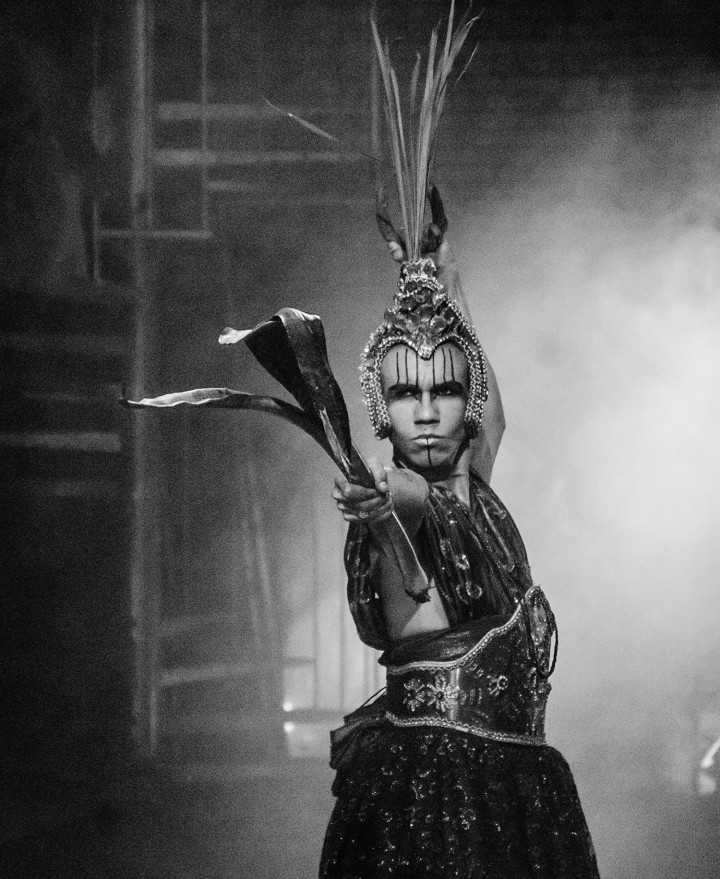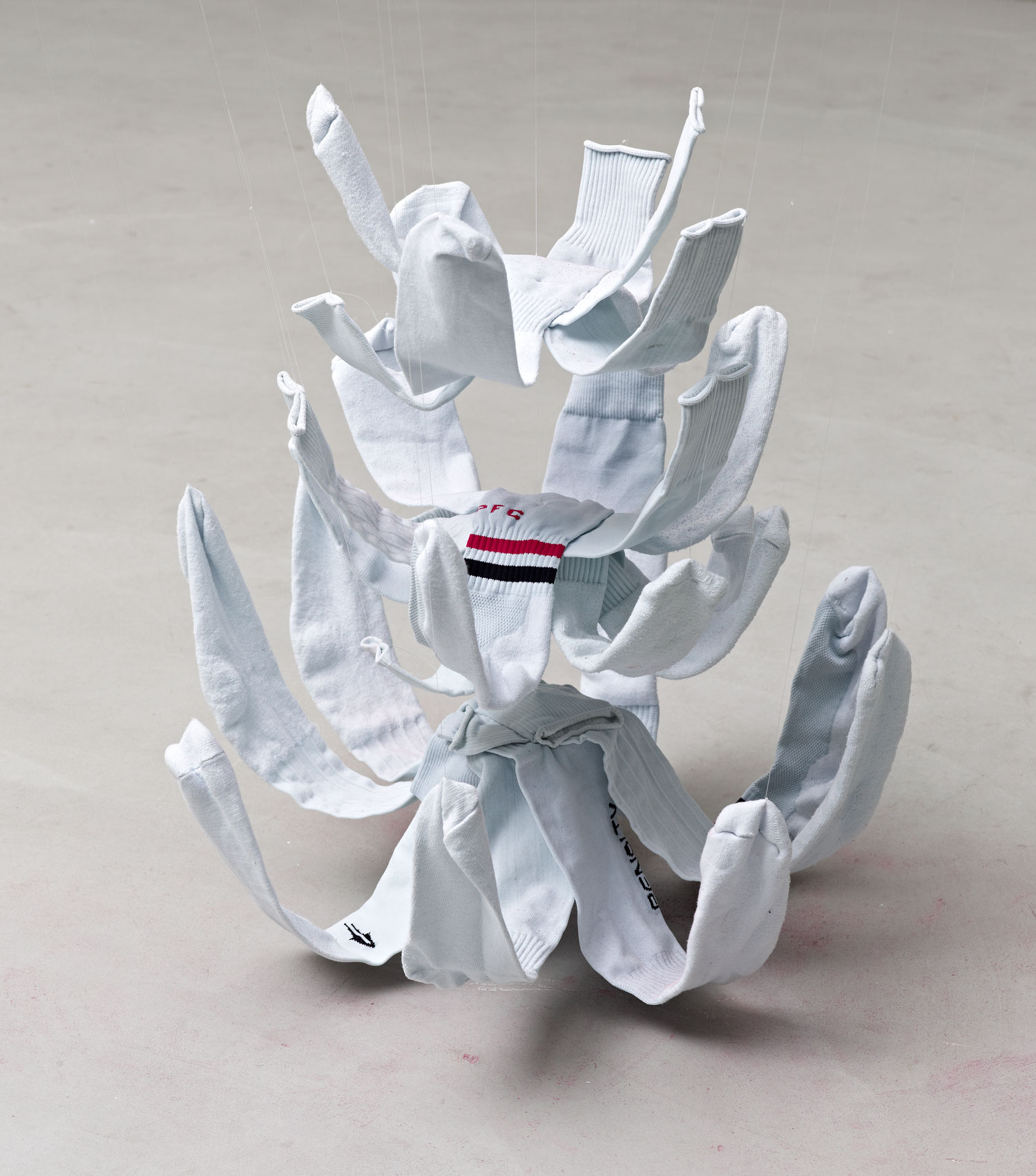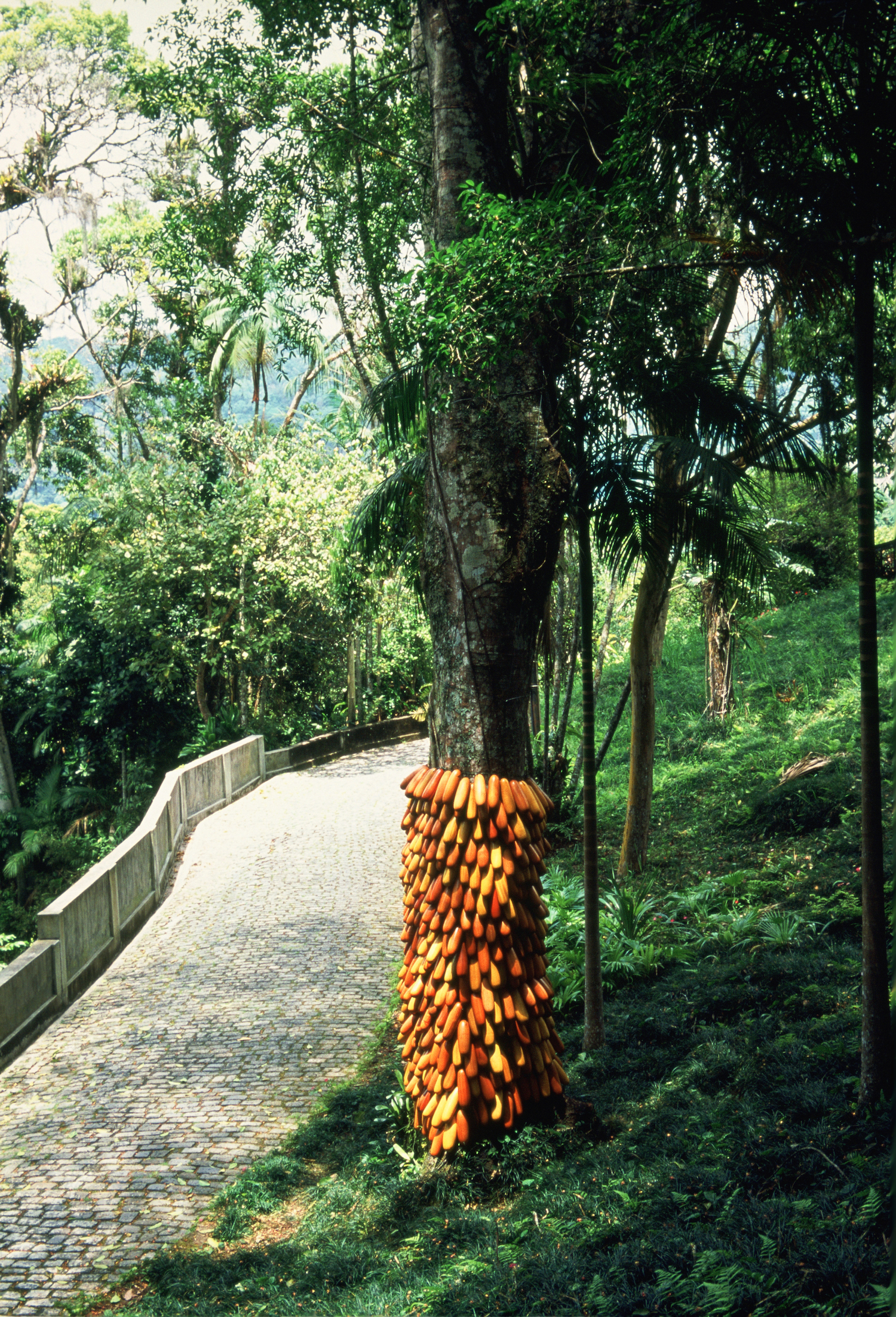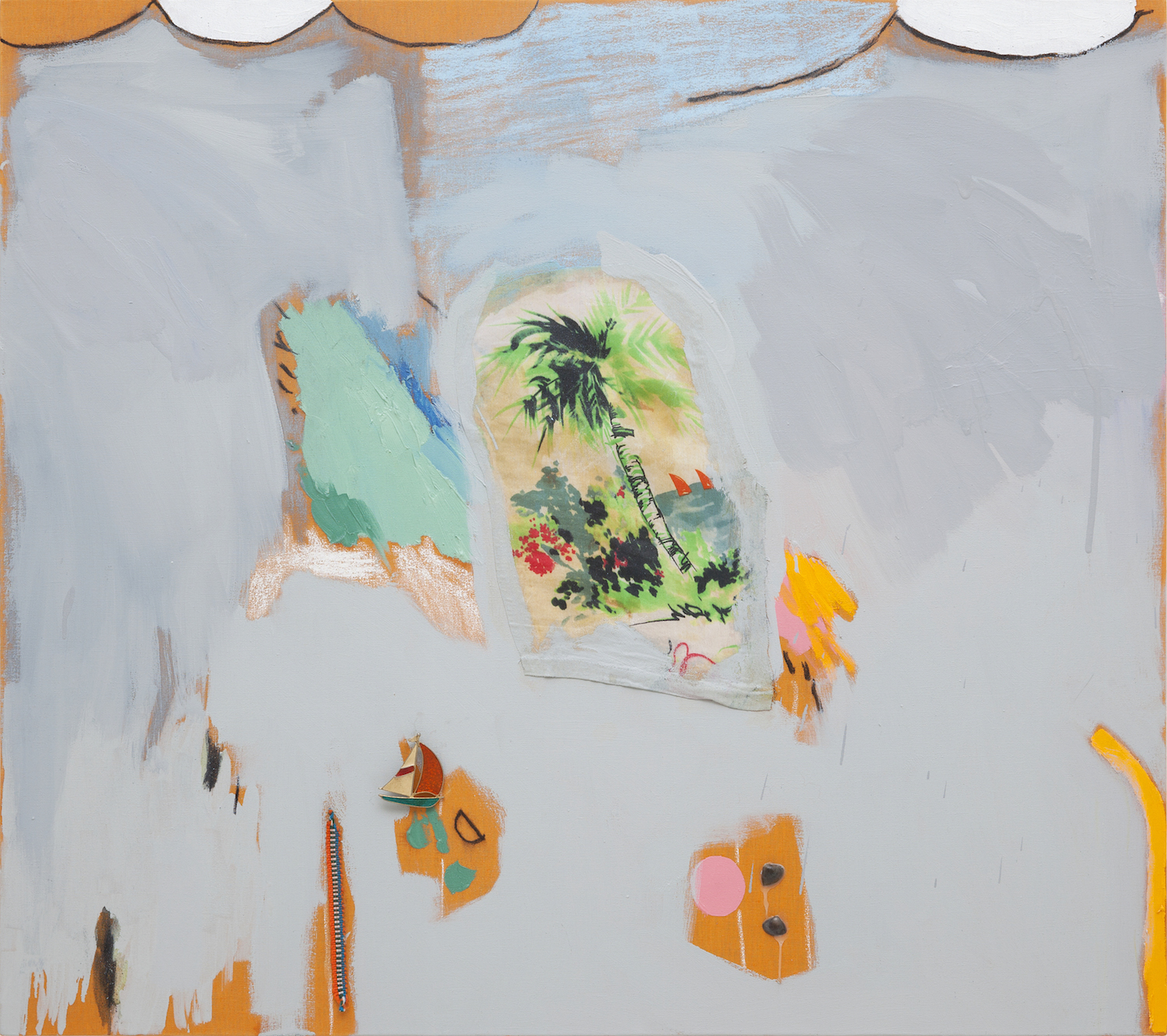
If São Paulo’s contemporary art production is, for the moment, mainly centered on exhibition programs within a sprawling network of commercial galleries, alternative spaces and museums, this has not always been the case. In the absence of this institutional framework, artist collectives — such as 3NÓS3 (Mario Ramiro, Hudinilson Jr., Rafael França) during the late 1970s and early 1980s, as well as Coletivo Formigueiro (Almir Almas, Lucas Bambozzi and Rachel Rosalen) in the early 2000’s — worked with different forms of intervention in the public space. 3NÓS3 bagged a number of monuments around the city during the era of military dictatorship (Ensacamentos,1979) or blocked street crossings with colorful tape (Interdição, 1979); while Coletivo Formigueiro organized a mobile radio intervention at the opening of media art festival Emoção Artificial at Itau Cultural in 2002 and mounted a flyposting intervention, Some things you will never get to know through the media, throughout the city in 2003.
Today there seems to be a more distinct division between the agents of contemporary art, theater and activism in the city. If the latter is predominantly focused on the safeguarding of public space in the city as well as resistance against rampant real estate speculation, the city boasts a number of theater collectives that — in the Brechtian tradition — dissolve the borders between protagonist and chorus, between actor and spectator. Attempting to raise critical consciousness, Brecht’s idea of theater “appeals less to the feelings than to the spectator’s reason. Instead of sharing the experience the spectator must come to grips with things” [B. Brecht, Brecht on Theater, Hill and Wang, New York, 1957–64, p. 23]. Within the remit of Brazilian theater these notions trigger associations with Augusto Boal’s theater, in which all participate freely. Boal propagated audience participation in the plays he staged at the Arena Theater in central São Paulo, coining the term spect-actor. In 1971 he was kidnapped and exiled first to Argentina, where he wrote his first major text, Theater of the Oppressed, and later moved to Paris. His legacy still resonates in Brazilian theater production.
Two theater companies have been at the forefront of critical discourse, engaging historic debates around the legacy of the military dictatorship as well as contemporary debates on urbanism, public transport, construction, gender theory, consumerism and public spending.
Founded in 1991 by director Antonio Araújo together lighting designer Guilherme Bonfanti, Teatro da Vertigem has staged its plays in a hospital (O Livro de Jó, 1995), on a river (BR-3, 2006) and on the streets of São Paulo. For Bom Retiro 958 metros (2012) visitors were invited to gather outside a small shopping mall in a textile and fashion retail district near the main train station Luz, which is at the center of a shady neighborhood with an open drug scene known as Crackolandia. Traditionally under Jewish ownership, the Korean businessmen who now run many of the shops employ immigrants from Bolivia for the production of their textiles. Bom Retiro 958 metros unfolded in an itinerant form around the district, with actors performing inside boutique stores or sweatshops; alongside the railway a performer mimicked the paranoid behavior of a crack addict in search of a “rock.” Criticizing the fashion-addicted consumer of today, the limbs of display mannequins were splattered around the streets or piled up in a dumpster; actors blocked a street crossing to perform a fashion show; and the play ended in the derelict theater auditorium of the nearby Casa do Povo, a former Jewish school and cultural center.

If Bom Retiro 958 metros was essentially modeled on the characteristics of the district where it was performed, the recent reenactment of A última palavra é a penúltima– 2 [The Last Word is the Penultimate – 2] (2008–14) stems from director Antonio Araújo and Eliana Monteiro’s reading of Gilles Deleuze’s The Exhausted. Deleuze’s essay was first published in France as an afterword to four plays for television by Samuel Beckett. In The Exhausted, Deleuze sets out with the premise that “exhausted is a lot more than tired.” São Paulo audiences — where a general sense of fatigue pervades the megalopolis, a city where many travel more than two hours a day to get to work, where traffic is horrendous, and ever more high rises are being constructed for the constant influx of new residents — immediately identified with the script. Yet, as Deleuze put it: “Lying down is never the end, the last word; it’s the penultimate, and there is too much risk of being rested enough, if not to get up, at least to roll or crawl.” The show must go on.
Aúltima palavra é a penúltima– 2 was then one of the very few projects taking place within the downtown city center context as part of this year’s 31st São Paulo Biennial. Now reinterpreted after its initial 2008 staging, the play took place in an abandoned underground passage connecting the Viaduto de Cha bridge with the Ramos de Azevedo Square. Audiences were seated in the empty shop fronts of the passage and witnessed a spectacle on human decay, anxiety and the craze of urbanization. To the occasional sounds of electronic music, a business woman paraded nervously back and forth; a variety of agents carried ubiquitous “for rent” and “for sale” signboards; a long-haired man snorted a gigantic line of cocaine using a traffic cone; another one pulled down his trousers, offering his buttocks for sex; and an elderly lady, abandoned by her caregiver, was left sitting naked in a wheelchair (“Only the exhausted is sufficiently disinterested, sufficiently scrupulous” wrote Deleuze). Down in the urban underpass the actors mixed with the regular passersby, as they curiously crossed the usually closed passage. Audiences remained behind the mirrored glass, compliant with a spectacle that evoked everyday life and sensory exhaustion in the megalopolis.
Preceding the initiation of Teatro da Vetrigem is the avant-garde ensemble Teatro Oficina, founded in 1958 at the Law School of the University of São Paulo by actor-director José Celso Martinez Corrêa aka Zé Celso. Drawing inspiration not only from Brecht and Boal’s theater techniques but also from Oswald de Andrade’s antropofagic manifesto and the aesthetics of the Tropicalia movement, the theater was a principal force behind the cultural revolution of the late 1960s in Brazil. The ensemble is now housed in a heritage-listed building designed by architects Lina Bo Bardi and Edson Elito.
While Teatro Vertigem directly engages sites throughout the city, Celso and his ensemble Uzyna Uzona bring political debate into their plays, mostly staged inside the theater and its immediate surroundings. Much like in Russian avant-garde theater, Celso’s dramaturgy and the architecture of the theater are designed to involve the public in the dramatic action. Practically the entire auditorium is converted into a stage. The public is seated on a scaffolding structure on either side of a slightly tilted corridor at the center, supported by a boardwalk and a small stage for live musical accompaniment: the terreiro eletrônico, as Lina Bo Bardi liked to call it. None of the necessary infrastructure seems to be hidden.

In 2012, the ensemble staged Acordes as an interpretation of Brecht and Paul Hindemith’s Das Badener Lehrstück Vom Einverständnis (1929). The work was in opposition to the institution of the Catholic Church and state-sanctioned violence, and promoted freedom of sexuality and increased ecological awareness. As in the 1929 premier of the piece in Baden-Baden, themes of death and violence dominated Acordes; a clown was dismembered under the pretext of assistance. Limbs were separated using large amounts of fake blood, leaving the victim completely disassembled and covered in blood on the ground. Billed as a musical, director Celso interpreted Acordes as an “arts assembly with the public acting as a multitude. The arts and the multitude, still separated by the dictatorship of marketing and the society of the spectacle, free themselves of remaining limits and examine each other, bringing their own bodies to orgiastic ecstasy, causing the old model to fall and starting the construction of another flight into the green economy of another world.”
In April 2014, Walmor y Cacilda 64-2014: O ROBOGÓLP opened on the 40th anniversary of the Carnation Revolution in Portugal. Like many other plays in recent years, the performance was dedicated to and inspired by the work of renowned actor Cacilda Becker (1921–1969), a personal friend of Celso, who he felt needed to be honored in a series of productions. Walmor y Cacilda 64-2014: O ROBOGÓLPE was densely layered with references to the era of military dictatorship and major events such as the World Cup, the Olympics and the presidential elections that would take place later that year. It followed incidents in 2013 in which major upheaval was sparked by an increase in public transport fees, poor medical care in rural regions and vast amounts of money spent on sports events — including new police riot outfits that evoke Robocop. Robocop suffers a blow at the play’s end, meanwhile the chorus joins in a euphoric hymn as the monstrous uniform is buried under the stage.
Later during 2014 this performance was followed by Cacilda!!!!! A rainha decapitada [Cacilda, the decapitated queen], with influences and references ranging from Luigi Pirandello to the myths of Antigone, Dionysius and Aphrodite. Similar in length to other plays, around four and a half hours, the piece takes the end of the passion between Cacilda Becker and Adolpho Celi, who was the principal force behind the Brazilian Comedy Theater, as the starting point for its script. Oscillating between dance, cabaret, and musical, Cacilda!!!!! A rainha decapitada also addresses the numbed consumerism of the new middle-classes, the growing power of evangelical churches in the country, image realities mediated via social media and antiquated gender roles.
Other collectives, such as Coletivo Estopô Balaio, are active with different performances throughout the city. A variety of venues offering a forum for experimental theater coexist on a stretch off Roosevelt Square in the city center. “Estopô Balaio,” which translates into “mess” or “confusion,” is composed mainly of artists from the northeast of Brazil that live in São Paulo. Founded in 2009, their performances have been mostly realized in the suburban district of Jardim Romano, and they engage local histories as well as boroughs inhabitants as part of their cast. Their piece Daqui a pouco o peixe pula [In a moment the fish jumps] in 2012 was based on the flooding caused by the rising of the river during the rainy season, and the script gave accounts from local inhabitants. Inspired by Italo Calvino’s Invisible Cities,the production A cidade dos rios invisiveis [The city of invisible rivers]took place in a overland metro car where commuters were handed an audio guide featuring recordings about the passing landscapes, with actors intervening and engaging passengers in conversations as part of the work.
Stemming directly from the discourse of political propaganda and the problematics of life in the megalopolis, theater production today maintains an ambitious critical stance towards socio-political realities in this country, thus forming an essential part of the avant-garde in the contemporary visual culture of Brazil.





